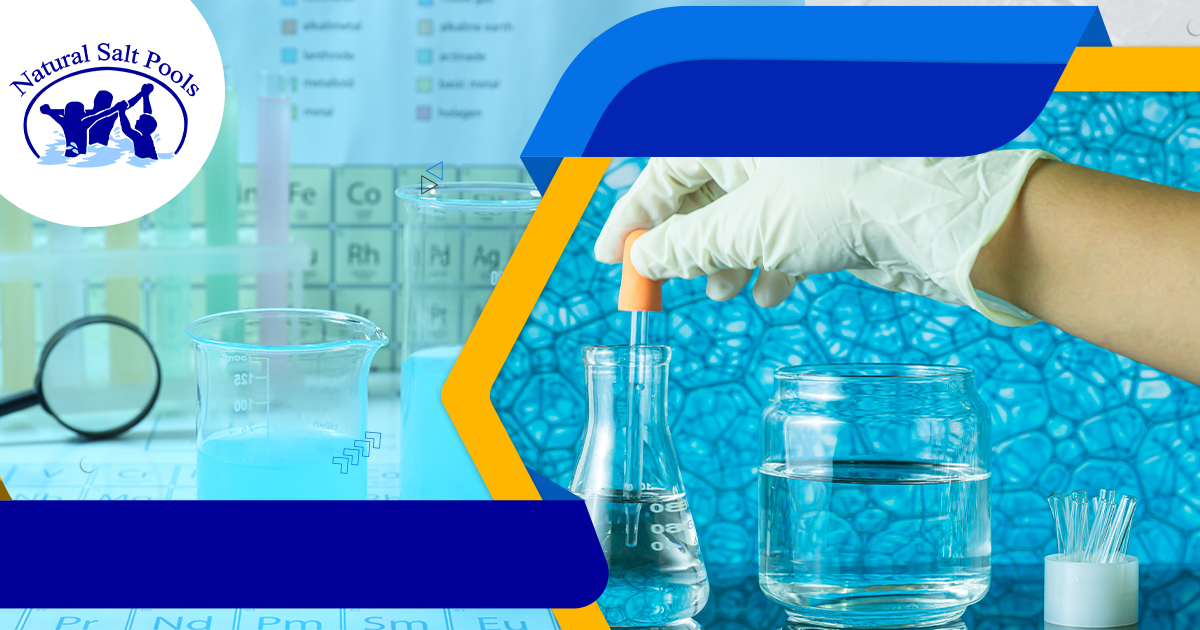Maintaining proper pool chemistry ensures a safe and enjoyable swimming environment. The essential steps for maintaining proper pool chemistry can ensure a safe, clean, and enjoyable swimming experience and preserve the longevity of your pool. Here are the essential steps for maintaining proper pool chemistry:
- Regular testing: Test the pool water regularly using reliable pool water testing kits. Test for pH levels, chlorine and bromine levels, alkalinity, and calcium hardness. The frequency of testing may vary depending on usage, weather conditions, and the type of pool.
- Balancing pH levels: pH levels should typically be maintained between 7.2 and 7.6, slightly alkaline. pH affects the effectiveness of chlorine and other chemicals. Use pH increases or decreases as needed to maintain the proper pH balance.
- Maintaining chlorine or bromine levels: Chlorine or bromine helps kill bacteria and algae in the water. Keep the chlorine and bromine levels within the recommended range (usually 1-3 ppm for chlorine and 3-5 ppm for bromine).
- Alkalinity adjustment: Total alkalinity acts as a buffer for pH levels, helping to prevent rapid pH fluctuations. Alkalinity levels should typically be maintained between 80-120 ppm. Use alkalinity to increase or decrease levels to adjust levels as necessary.
- Calcium hardness: The amount of calcium ions that are in the water is known as its calcium hardness. Sufficient levels of calcium hardness aid in preventing equipment and pool surface corrosion. For the majority of pools, target calcium hardness levels of 200–400 ppm.
- Shock treatment: Shocking the pool involves adding a large dose of chlorine to kill bacteria, algae, and organic contaminants. Shock treatment should be done regularly, especially after heavy usage, extreme weather, or when water quality deteriorates.
- Algaecide treatment: Algaecides help prevent algae growth in the pool. Use algaecide regularly, especially in warmer months or when algae is a recurring problem. Follow the manufacturer’s instructions for proper dosage and application.
- Regular cleaning: Keep the pool clean by skimming the surface, vacuuming the bottom, and scrubbing the walls regularly. Remove debris, leaves, and other contaminants from the water to prevent algae growth and maintain water clarity.
- Temperature consideration: Warmer water temperatures can increase the growth of algae and bacteria, so monitor and adjust chemical levels accordingly, especially during hot weather.
- Keep records: Maintain a log of water test results, chemical additions, and any pool maintenance activities. This helps track trends, identify problems early, and ensure consistent water quality.
How to balance pH levels in a swimming pool?
Balancing pH levels in a swimming pool is crucial for maintaining water quality and ensuring swimmer comfort. Proper pool chemical dosing can maintain balanced water chemistry in your swimming pool, ensuring a safe and enjoyable swimming experience. Here are the essential steps to balance pH levels:
- Test pH levels: Use a reliable pH test kit to measure the pH level of the pool water. Ideally, pH should be between 7.2 and 7.6, which is slightly alkaline.
- Adjust pH as needed: If the pH is too low (below 7.2), the water is acidic. To raise pH, add a pH increaser such as sodium carbonate (soda ash) or sodium bicarbonate (baking soda). Follow the manufacturer’s instructions for dosage. If the pH is too high (above 7.6), the water is alkaline. To lower pH, add a pH-decreasing agent such as muriatic acid or sodium bisulfate. Again, follow the manufacturer’s instructions for dosage.
- Distribute chemicals: Add the necessary chemicals to the pool water with the pump running. This helps distribute the chemicals evenly throughout the pool.
- Wait and Re-test: After adding chemicals, wait for several hours or as directed by the product instructions. Then retest the pH levels to ensure they are within the desired range.
- Repeat if necessary: If pH levels are still outside the ideal range, repeat the adjustment process until the desired pH level is achieved. Be cautious not to overshoot the target pH.
- Regular maintenance: Check the pH levels of your pool water regularly, at least once a week, and adjust as necessary to prevent significant fluctuations.
- Address other factors: Keep in mind that other factors, such as total alkalinity and calcium hardness, can influence pH levels. Maintaining proper levels of these factors can help stabilize pH.
- Seek professional advice: If you’re unsure about balancing pH levels or encounter persistent issues, consider seeking advice from a pool professional or water chemistry expert.
 Leave us a review on Google !
Leave us a review on Google !






